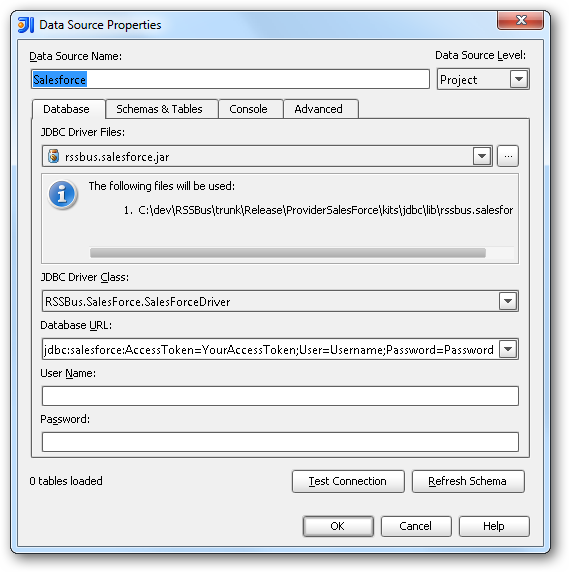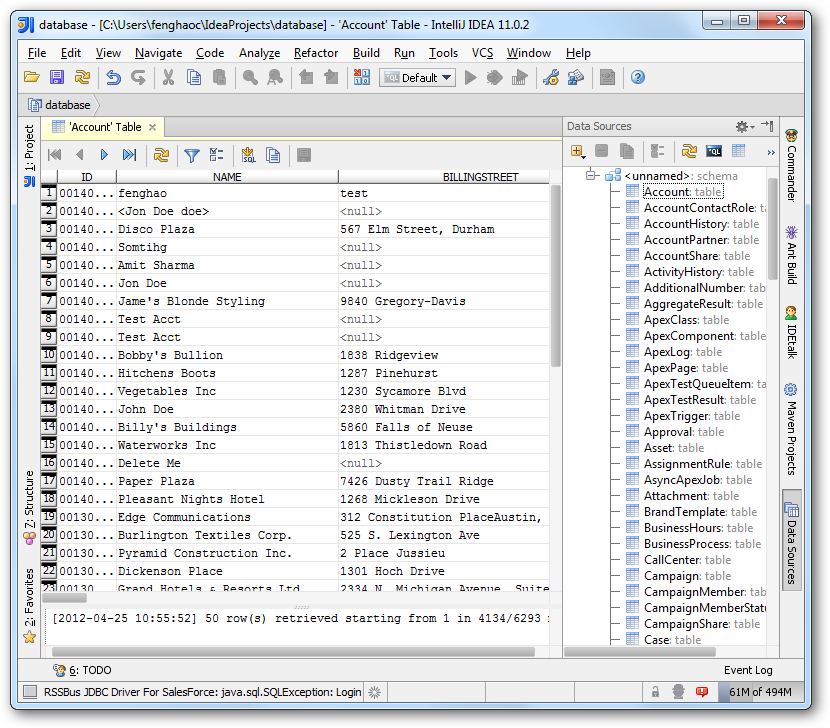Discover how a bimodal integration strategy can address the major data management challenges facing your organization today.
Get the Report →How to connect to SAP Netweaver Gateway Data from IntelliJ
Integrate connectivity to SAP Netweaver Gateway data with wizards in IntelliJ.
The CData JDBC Driver for SAP Netweaver Gateway enables you to access SAP Netweaver Gateway as a JDBC data source, providing integration with rapid development tools in IDEs. This article shows how to use the data source configuration wizard to connect to SAP Netweaver Gateway data in IntelliJ.
Create a JBDC Data Source for SAP Netweaver Gateway
Follow the steps below to add the driver JAR and define connection properties required to connect to SAP Netweaver Gateway data.
- In the Data Sources window, right-click and then click Add Data Source -> DB Data Source.
In the Data Source Properties dialog that appears, the following properties are required:
- JDBC Driver Files: Click the button next to this menu to add the JDBC Driver file cdata.jdbc.sapgateway.jar, located in the installation directory.
- JDBC Driver Class: In this menu, select cdata.jdbc.sapgateway.SAPGatewayDriver from the list.
Database URL: Enter the connection URL in the JDBC URL property. The URL must start with jdbc:sapgateway: and includes connection properties separated with semicolons.
SAP Gateway allows both basic and OAuth 2.0 authentication. You can use basic authentication to connect to your own account, or you can use OAuth to enable other users to retrieve data from your service with their accounts. In addition to authenticating, set the following connection properties to access SAP Gateway tables.
- Url: Set this to the URL of your environment, or to the full URL of the service. For example, the full URL might appear as: https://sapes5.sapdevcenter.com/sap/opu/odata/IWBEP/GWSAMPLE_BASIC/. In this example, the environment URL would just be: https://sapes5.sapdevcenter.com.
- Namespace: Set the appropriate Service Namespace. In the example above, IWBEP is the namespace. It is optional if the full URL to the service is specified.
- Service: Set this to the service you want to retrieve data from. In the example above, the service is GWSAMPLE_BASIC. It is not required if the full URL is specified.
Authenticate via Basic Authentication
In basic authentication, you use your login credentials to connect. Set the following properties:
- User: This is the username you use to log in to SAP Gateway.
- Password: This is the password you use to log in to SAP Gateway.
Authenticate via OAuth Authentication
You can connect to SAP Gateway using the embedded OAuth connectivity (without setting any additional authentication connection properties). When you connect, the OAuth endpoint opens in your browser. Log in and grant permissions to complete the OAuth process. See the OAuth section in the online Help documentation for more information on other OAuth authentication flows.
Built-in Connection String Designer
For assistance in constructing the JDBC URL, use the connection string designer built into the SAP Netweaver Gateway JDBC Driver. Either double-click the JAR file or execute the jar file from the command-line.
java -jar cdata.jdbc.sapgateway.jarFill in the connection properties and copy the connection string to the clipboard.
![Using the built-in connection string designer to generate a JDBC URL (Salesforce is shown.)]()
A typical JDBC URL is the following:
jdbc:sapgateway:User=user;Password=password;URL=https://sapes5.sapdevcenter.com/sap/opu/odata/IWBEP/GWSAMPLE_BASIC/;InitiateOAuth=GETANDREFRESH

Edit and Save SAP Netweaver Gateway Data
To discover schema information, right-click the data source you just created and click Refresh Tables. To query a table, right-click it and then click Open Tables Editor. You can also modify records in the Table Editor.








